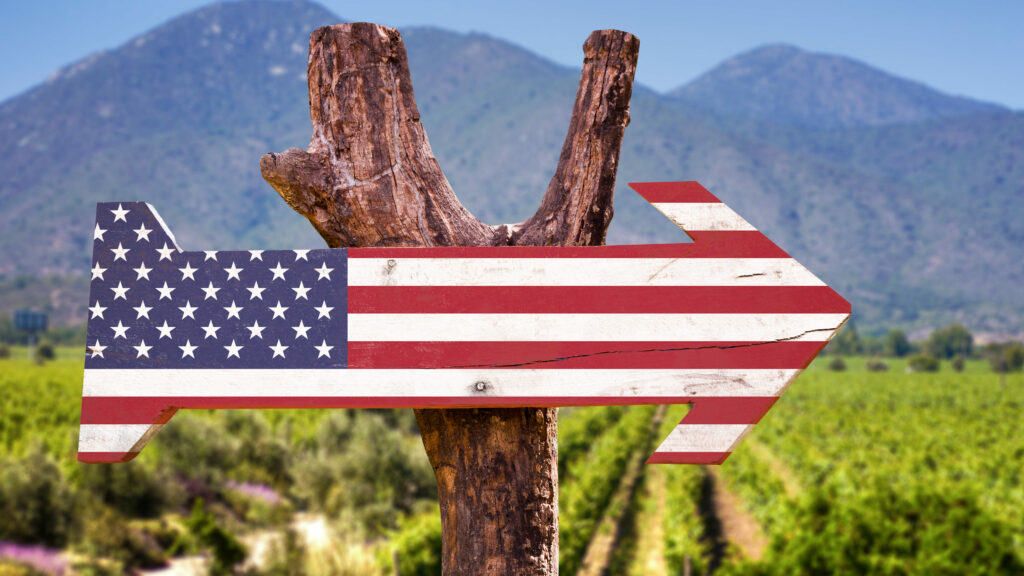America the Wine-derful

In the history of civilization, America is the new kid.
If you’ve ever thought, “I can’t live in a world without wine”, you’ll know how the early explorers to the new world felt. Beginning as early as the 1500s explorers brought VITUS VINIFERA, the traditional European grape vines used to make wine, to plant in American soil for the first time. Much to the frustration of the settlers, the vines struggled to survive exposure to the new diseases and fungus where they were transplanted. But true to the American spirit, and the dream of having a nice source of wine nearer than a hemisphere away, the committed few did not stop trying.
It was the mid-1800s, almost 300 years later, when US viniculture finally began to bud fully. The continued import of the different European varietals of VITUS VINIFERA, coupled with the immigration and settling of missions along the California coast provided wine growers the right vines and the right growing conditions to reliably produce wine in the new world. This might have gone unnoticed by the rest of the world, but fate threw a curve ball in the 1880s when a U.S. vine stock sent to Europe for routine experimentation had unknowingly transported a stowaway pest, PHYLLOXERA to Europe. As the PHYLLOXERA bugs multiplied and ravaged vineyard after vineyard it essentially obliterated Europe’s wine vineyards. Without the vines there were no wines thus opening the door for US wines to enter the global wine market.
Sadly, the U.S. was not immune to phylloxera either. So many of the vineyards in the U.S. were being planted with European vine stock that the disease nearly destroyed the American wine industry, too. Fortunately, science prevailed, and by grafting the European VITUS VINIFERA vines onto American native rootstock such as VITUS LABRUSCA, hybrid vines were produced which had natural immunity to the louse. The European and US wine industry were saved, and the rest is history. But wait…
As the luck and wine were starting to pour generously, another setback was ahead for US wine makers – The Prohibition of the 1920-30s. Much of the great progress by U.S. winemakers was halted as the market (at least the legalized one!) was essentially reduced to church wine for communion services. The few vineyards and winemakers that survived Prohibition came back slowly but surely taking nearly three decades to rebuild the industry. In the meantime, Americans once again turned to European imports due to the lack of local wines. Several tenacious U.S. wine makers were not willing to play second fiddle for long and worked tirelessly to build the foundation of the wine industry as we know it today and it did not take long for their hard work to pay off for them. Even so, it would take yet another unexpected plot twist to push American wines fully back onto the global stage. And here it comes.
America’s bicentennial, 1976, was a year of celebrating our independence and all things American. It was also the year U.S. wines took the global stage winning the “Judgement of Paris,” an annual blind wine tasting competition led by world-leading wine experts. Many in the wine industry were stunned that two American wines could beat the best wines in the world, especially those from the fabled Burgundy and Bordeaux regions of France! From that point forward America’s status as a wine making powerhouse continued to increase, and U.S. and global consumption increased right along with it. To protect consumers by ensuring wine makers accurately reflected the contents of all the new wine bottles flooding shelves in wine shops and grocery stores, the U.S. Alcohol and Tobacco Tax and Trade Bureau (TTB) initiated numerous regulations including the dedication of American Viticultural Areas (AVAs) in 1980. It might come as a surprise that Augusta, MO was the first AVA designation to be granted, with Napa, CA being the second. It was actually the state entomologist of Missouri who solved the Phylloxera infestation problem and before Prohibition, Missouri was the second largest wine producer in the U.S. More AVAs are recognized every year with between 240-250 designations as of 2021.
